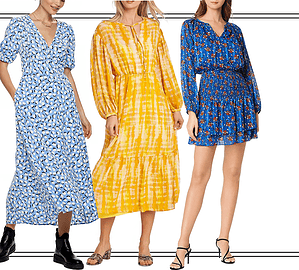Thirty-four years ago, the shoe industry changed forever. It was the year 1984 when Nike signed the still unknown, but promising, basketball player Michael Jordan, in an unprecedented deal within the sports arena. The Oregon brand, fully established as one of the best-known sports brands in the world, was still far from the leadership status it enjoys today. As for Jordan, although he was one of the most promising basketball players of that time, he still did not enjoy the notoriety with which would mark his successful career.
For Nike, the signing of Jordan was a risky move. Betting everything on a player who had not even debuted was quite a bold move. However, the desire to snatch the leadership from Reebok and become the benchmark among sports brands mattered more.

Five years of exclusivity and sneakers that would carry his name – that was the deal. All in exchange for Jordan fulfilling in his first three years at least one of the following three objectives:
- Win the Rookie of the Year award
- Play in an All-Star Game
- Score an average of more than 20 points per game
In the instance he was not able to fulfill any of these objectives, the American brand could unilaterally terminate the contract.
After both parties signed the agreement, the sneakers followed. The first Nike Air Jordan, known as the Air Jordan I, whose history is well-known, not only for the sneaker itself, but for all that it stood for. Because their color combination was not within NBA regulations, Jordan received a fine for each official game he played, and Nike footed the bill.
From there, the rest is history. After just his first season, Jordan was selected as Rookie of the Year in which he breezed through a whopping 30 points per game. His slam dunks and seemingly effortless jumps were not only a milestone in the game of basketball, but also helped from a marketing perspective.
Although this story is mostly known, there exist certain curiosities that not everyone may be familiar with – would you like to know more?
1. Jordan brand has always been closely related to cars
It’s no secret that Michael Jordan loves motorsports. In fact, the player himself requested a sports car as part of his contract with Nike. Some of his favorite sneakers, like Jordan XIV and XVII, are even inspired by iconic car models.

More specifically, it was Italian cars that served as the player’s inspiration. For Tinker Hatfield, one of the world’s most important shoe designers, as well as the man behind some of the most iconic Nike models, the lines of Italian sports shoes were very similar to Michael Jordan’s style of playing. Hence, Italian sports cars became a strong influence to carry out designs.
2. Jordan did not like the first shoe designs that Tinker Hatfield presented
To begin with, Jordan himself refused to use the first Jordan 1 that had been presented to him at the time – he argued that the combination of colors would make him look like a clown.
What ensued was a battle between Jordan and the Nike design team, until the player finally relented and decided to play in them. The outcome speaks for itself, as the basketball shoes became one of the greatest milestones in the history of the sport.
3. Jordan’s relationship with Europe
Apart from the inspiration taken from Italian cars for his sneakers, Jordan’s relationship with Europe goes far beyond motorsports. In his second year in the league, and as part of a tour with Nike, he went leaving his mark in European basketball courts, some in London and Trieste, Italy.
On one of these instances, Jordan ended up shattering the glass off a backboard during an exhibition match, whilst performing a dunk.
4. Engineering sees its starting point in design. Modifying prints to improve performance
The upper of the Jordan II was a sensation at the time, due to its appearance. Jordan was not only concerned about the aesthetics of his shoes, but also in how they would help performance. So, he asked Hatfield to create a sneaker that seemed as if he was debuting a pair in each game.
In this way, with the Elephant print, with a quality of materials never seen before, it was possible to manufacture a silhouette capable of providing maximum performance, while maintaining its aesthetics.
5. And the Swoosh?
As far back as can be remembered, Nike has always been known for ensuring its signature Swoosh is a highly visible and identifiable element of its sneakers.
The Air Jordan VII has been one of the most daring sneakers ever created. So much so, that Jordan’s team discarded the iconic Swoosh on the upper. Tinker Hatfield defended this decision stating that it was time for Jordan’s like to fly on its own.
6. Jordan brand and its relationship with music
Throughout Jordan’s legendary career, there have always been rumors surrounding the relationship between the process of creating a sneaker and its connection to music.
That said, there were several Air Jordan designs that were inspired by music. However, this reached its peak with the Jordan XVII, which went on sale packaged with a Jazz music CD-ROM and with tracks keeping to the rhythm of Michael Jordan’s finely tuned game.
7. The Jordan XX was inspired by a trumpet factory
Tinker Hatfield has reiterated on several occasions that when inspired by the design of a shoe, he makes use of minor disciplines. In the episode of Abstract, a Netflix documentary on design, Hatfield talks about how niche disciplines pique his interest.
This is the case of the Jordan XX, whose silhouette brought together Tinker Hatfield and Michael Jordan together for the brand’s twentieth anniversary. However, the most curious thing was that Hatfield was inspired to tell the story of a trumpet factory via this new sneaker.
8. The first collaboration of Jordan brand was with Undefeated
2005 was the year in which Jordan brand broke its own principles and presented its very first collaboration. As the story goes, the first model of Jordan brand with a second name to its title came about by their joining forces with retailer, Undefeated – it was meant to be. Together they managed to create a special edition of the Jordan IV and at only 72 pairs, the sneaker rose in value since the moment it was released on the market.
9. A Jordan 1.5 exists
Although almost nobody knows about this crazy idea, the custom hybrid between the Air Jordan I and Air Jordan 2 took place as a result of the injury Jordan had in 1985. To facilitate the transition of one model to the other, the Nike team united the best of both models into one silhouette, that we have not been able to see again.
10. Air Jordan Retro and Jordan’s first retirement
When Jordan retired the first time, a large portion of his fans were left with the feeling he would never return. The brand, therefore, also anticipated this, so they created the Air Jordan Retro line. The idea behind the line would be to reissue some of the player’s most emblematic models throughout his career.
However, although it had good reception, it had nothing to do with Jordan’s second retirement, when the line was relaunched and formed behind it a large network of collectors dedicated to helping the Jordan line continue to reach what it had until then.






